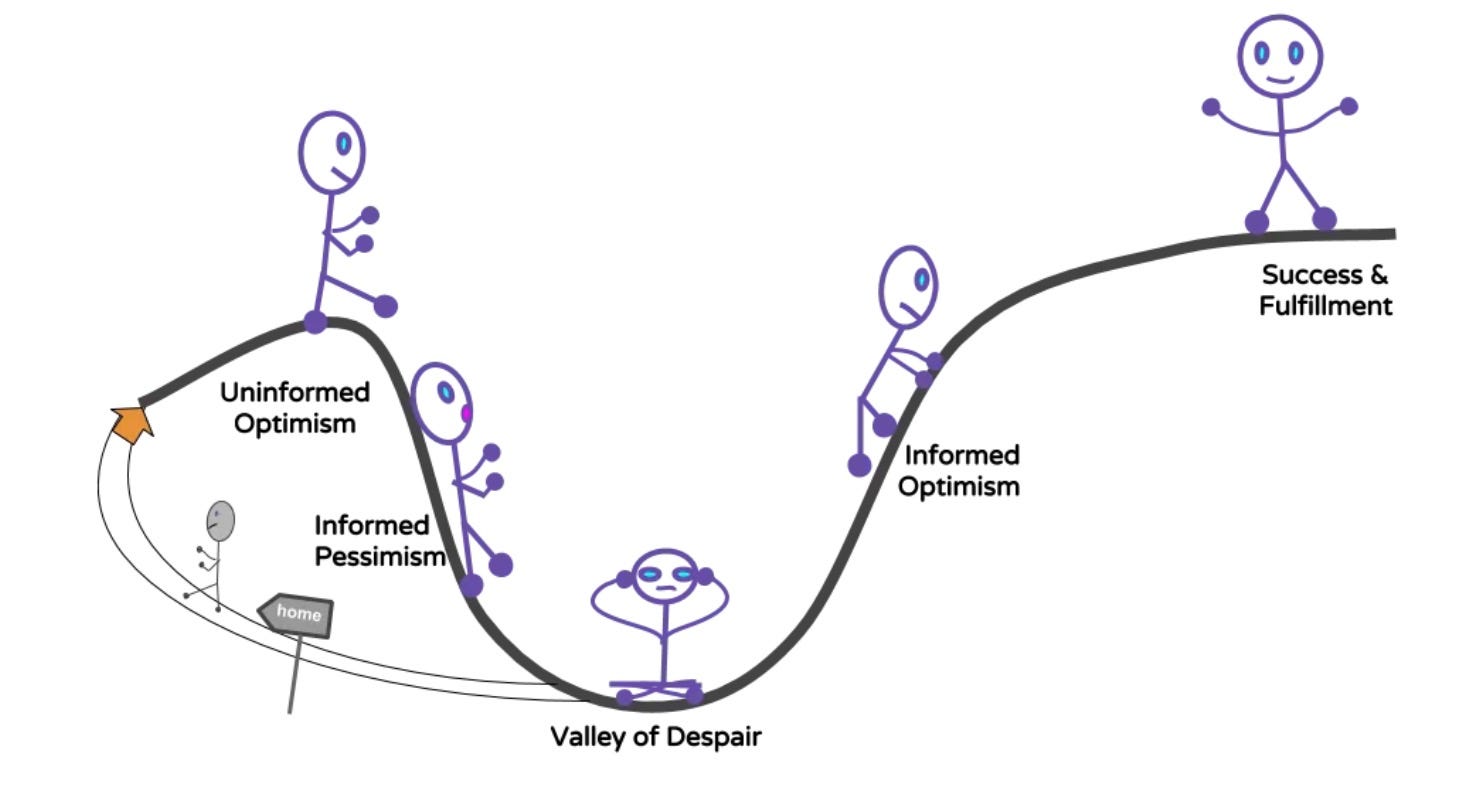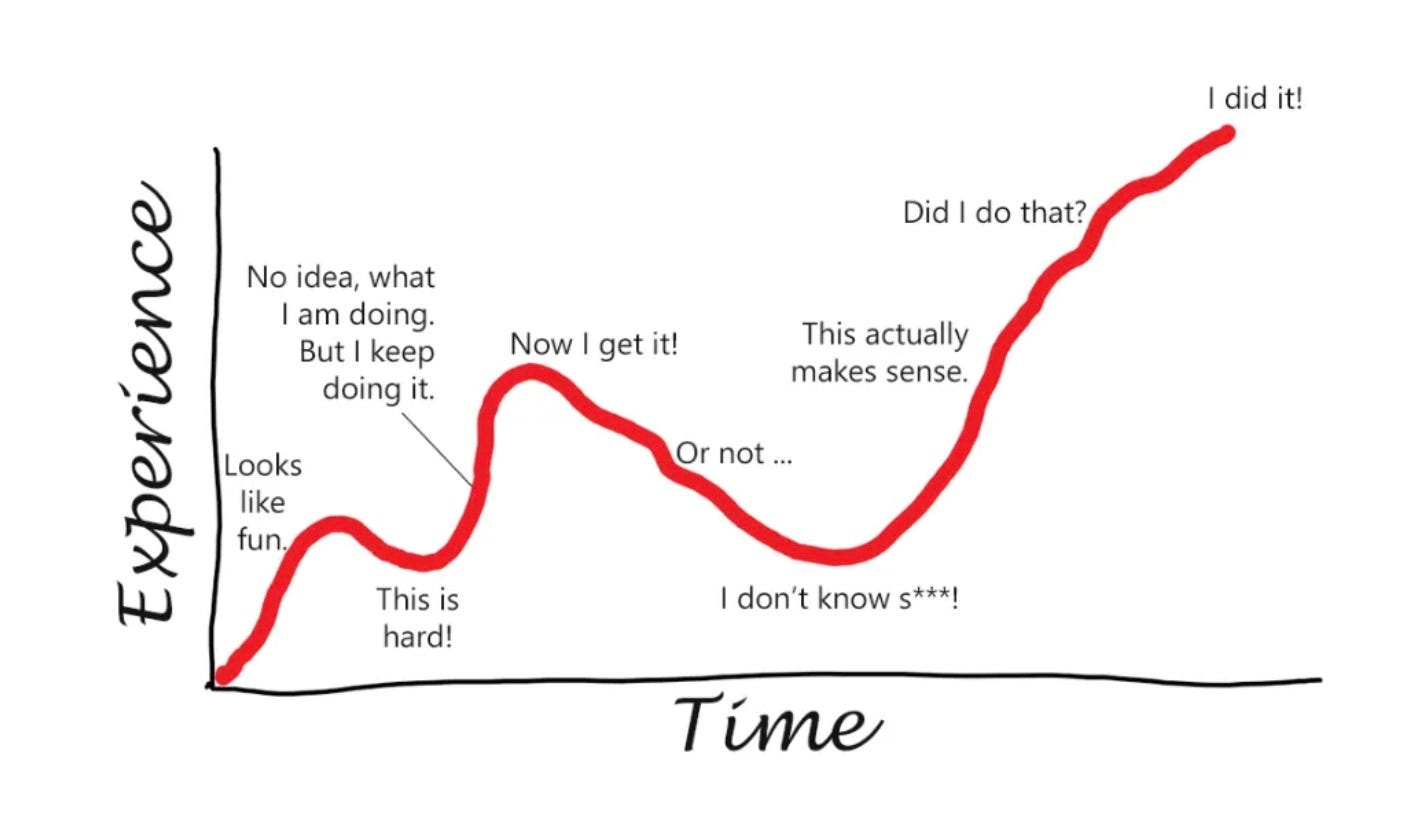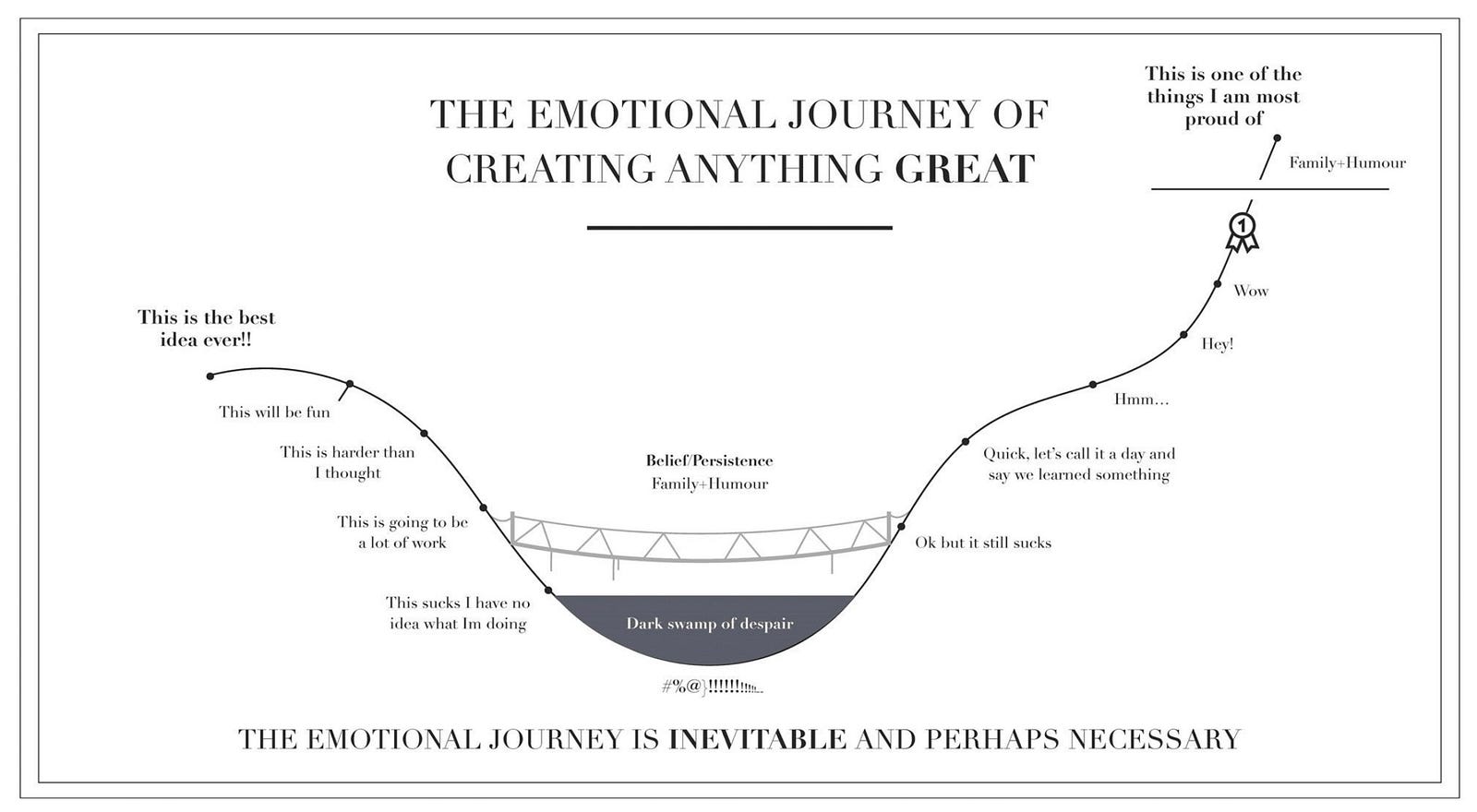Dips have taught me more about my strengths than paths with least resistance. Knowing when to quit and when not to quit are equally vital to your success. I’ve been pushing through dips for almost twenty years.
It’s just a phase.
“This too shall pass,” I keep telling myself.
Don’t get me wrong. I’ve shut down many projects in the past. But I keep pushing through the dip. Ninety percent of the time, I reinvent the process to get what I want. I’m still in the business of rising from the bottom.
Peaks and valleys have shaped my very definition of making progress. Moments of soaring exhilaration and unsettling dips are not going anywhere.
The ‘Dip’ is the way forward. It’s the reason I still write.
Anything worthwhile rarely follows a smooth, upward trajectory. Just before the thrilling peak of any pursuit is often a heart-stopping dip, a period of challenge and uncertainty.

The Dip is that inevitable low point on your learning curve, according to author and marketing expert Seth Godin. It’s the place where beginners quit. They see the slow progress, the mounting mistakes, and think, “This is pointless. I’m no good at this.”
But here’s the secret: the Dip is exactly where the magic happens.
“The Dip is the long slog between starting and mastery. A long slog that’s actually a shortcut, because it gets you where you want to go faster than any other path,” writes Seth Godin in his book, The Dip: A Little Book That Teaches You When to Quit.
The Dip tests your commitment.
Does the frustration make you want to throw in the towel, or does it ignite a fire to prove yourself? The Dip helps you identify pursuits you’re willing to fight for, the ones that hold a deeper meaning.
Dips expose our vulnerabilities, tendency to give up, or fear of failure. A downward curve exposes flaws in our approach, highlighting areas requiring improvement. Use them to reevaluate how you get things done.
While the peaks are exciting and joyful experiences, the Dips often leave us feeling lost, discouraged, and questioning our path. But at the core of a dip is a simple truth: significant progress rarely happens without significant resistance.
I use Dips as opportunities for introspection and refinement.
I refine and reassess my goals, identify weaknesses and come back stronger. I use them to delve into the root causes of things that are not going as expected. I build resilience through dips. I experiment, break free from rigid patterns, and discover better patterns for growth.
I think of a Dip as a natural filter.
Instead of viewing it as a dead end, I recognise it as a temporary phase, a stepping stone on my journey. I focus on learning from the experience.
For many people, dips manifest as a professional setback, a broken relationship, a period of self-doubt, or even a seemingly insurmountable obstacle. It’s tempting to view dips as failures, leading to discouragement and potential withdrawal. However, recognising them as natural stages in the growth process allows us to shift our perspective.
Dips are testing grounds where our resolve is challenged, our weaknesses exposed, and our commitment put to the test. It’s where the real work begins. Easy things are easily replicated, but the dip separates the dabblers from the doers.
Dig deep, push through the discomfort, and learn from every setback. The dip is your chance to refine your skills, build resilience, and discover a strength you never knew you had.

Dips can set you up for a stronger comeback. Walt Disney was famously fired from a newspaper for “lacking imagination” before creating the now-iconic Mickey Mouse.
Athletes train relentlessly, pushing their limits. Sometimes, they hit a plateau, a temporary dip in performance. That Dip is a crucial part of their reinvention. Persistence through new training techniques allows them to come back stronger.
Life beyond the Dip requires a shift in perspective. View it as a temporary phase, an opportunity to learn, adapt, and evolve.
If necessary, seek guidance from mentors or experts, analyse your approach, and, most importantly, keep your big picture in mind.
Life rarely unfolds according to our perfect timelines. There will be unexpected turns, unforeseen challenges, and moments of stagnation.
These experiences can make you question your choices, abilities, and even your very purpose. The temptation to abandon your goals and seek comfort in the familiar becomes overwhelming.
Giving in to the feelings of a dip is akin to giving up right before the rise. The Dip is not a sign of failure but rather a natural bend in the path to the peak.
It’s a test of your resolve, forcing us to adapt and grow. Watch out for self-doubt when you are going through the dip.
It can be overwhelming. It’s emotional.
But you can overcome that by narrowing your focus. Break down your goals into bite-sized chunks. Celebrate tiny wins. No matter how minor, each victory is a step closer to the top.

Momentum is your friend.
The struggle will ease with time. Your skills will sharpen. You’ll emerge a stronger, more capable version of yourself from the Dip.
“The Dip is the reason you’re here. It’s not enough to survive your way through this Dip. You get what you deserve when you embrace the Dip and treat it like the opportunity that it really is,” says Godin.
In conclusion, the dip before the rise is not a detour but an integral part of life’s journey. It is a crucible that tests our resolve, exposes our weaknesses, and ultimately helps us reach new heights.
The contrast between the darkness of the dip and the elation of the rise amplifies the joy of achievement. The struggle makes the victory even sweeter, imbuing success with a deeper significance and a sense of hard-earned accomplishment.
If you work hard enough in the Dip, you are likely to overcome.
- Power through with routine. Establish a daily routine that supports actionable plan. This strengthens you for the challenge.
- Plan your climb: Map out your next steps to break down the Dip into manageable pieces.
- Get help: Don’t hesitate to seek help or mentorship. Guidance can be a game-changer.
- Small wins, big impact: Break down your goals into achievable milestones. Completing smaller goals builds confidence and propels you forward.
A Dip is not a reason to quit; it’s a reason to dig in. It’s proof you’re on the right track. When you find yourself in a dip, don’t despair. Use it as fuel.
It’s only temporary. It’s a phase. Don’t let it drown you.
“This too shall pass.”
